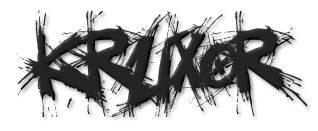:default
Quick Summary for :default
The
:default CSS pseudo-class selects form elements that are the default in a group of related elements.
Code Usage for :default
<fieldset> <legend>Favorite season</legend> <input type="radio" name="season" id="spring"> <label for="spring">Spring</label> <input type="radio" name="season" id="summer" checked> <label for="summer">Summer</label> <input type="radio" name="season" id="fall"> <label for="fall">Fall</label> <input type="radio" name="season" id="winter"> <label for="winter">Winter</label> </fieldset> More Details for :default
:default
The :default CSS pseudo-class selects form elements that are the default in a group of related elements.
What this selector matches is defined in HTML Standard §4.16.3 Pseudo-classes — it may match the <button>, <input type="checkbox">, <input type="radio">, and <option> elements:
selected attribute, or the first enabled option in DOM order. multiple <select>s can have more than one selected option, so all will match :default. <input type="checkbox"> and <input type="radio"> match if they have the checked attribute. <button> matches if it is a <form>'s default submission button: the first <button> in DOM order that belongs to the form. This also applies to <input> types that submit forms, like image or submit. Syntax
:default
Examples
HTML
<fieldset> <legend>Favorite season</legend> <input type="radio" name="season" id="spring"> <label for="spring">Spring</label> <input type="radio" name="season" id="summer" checked> <label for="summer">Summer</label> <input type="radio" name="season" id="fall"> <label for="fall">Fall</label> <input type="radio" name="season" id="winter"> <label for="winter">Winter</label> </fieldset> CSS
input:default { box-shadow: 0 0 2px 1px coral; } input:default + label { color: coral; } Result
Specifications
| Specification |
|---|
| HTML Standard # selector-default |
| Selectors Level 4 # default-pseudo |
See also
Web forms — Working with user data Styling web forms Related HTML elements:<button>, <input type="checkbox">, <input type="radio">, and <option> Select your preferred language English (US)DeutschEspañolFrançais日本語한국어Русский中文 (简体) Change language
Posted in
12:22 am, February 22, 2022
Add Comment
Other Items in CSS
rgb()
rgba()
:right
right
@right-bottom
:root
rotate
rotate()
rotate3d()
rotateX()
rotateY()
rotateZ()
row-gap
ruby-align
ruby-position
saturate()
scale
scale()
scale3d()
scaleX()
scaleY()
scaleZ()
:scope
scroll-behavior
scroll-margin
scroll-margin-block
scroll-margin-block-end
scroll-margin-block-start
scroll-margin-bottom
scroll-margin-inline
scroll-margin-inline-end
scroll-margin-inline-start
scroll-margin-left
scroll-margin-right
scroll-margin-top
scroll-padding
scroll-padding-block
scroll-padding-block-end
scroll-padding-block-start
scroll-padding-bottom
scroll-padding-inline
scroll-padding-inline-end
scroll-padding-inline-start
scroll-padding-left
scroll-padding-right
scroll-padding-top
scroll-snap-align
scroll-snap-stop
scroll-snap-type
@scroll-timeline


